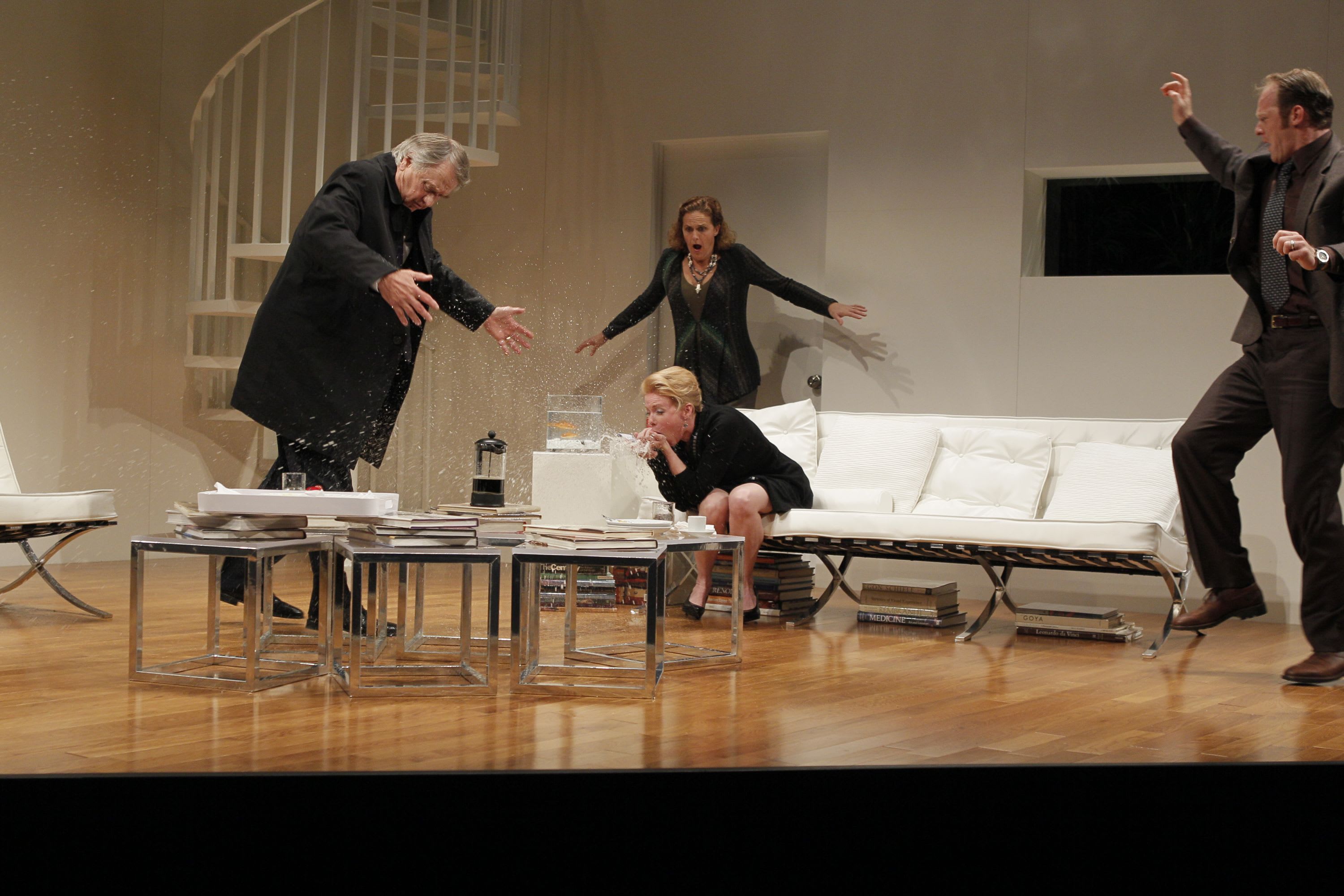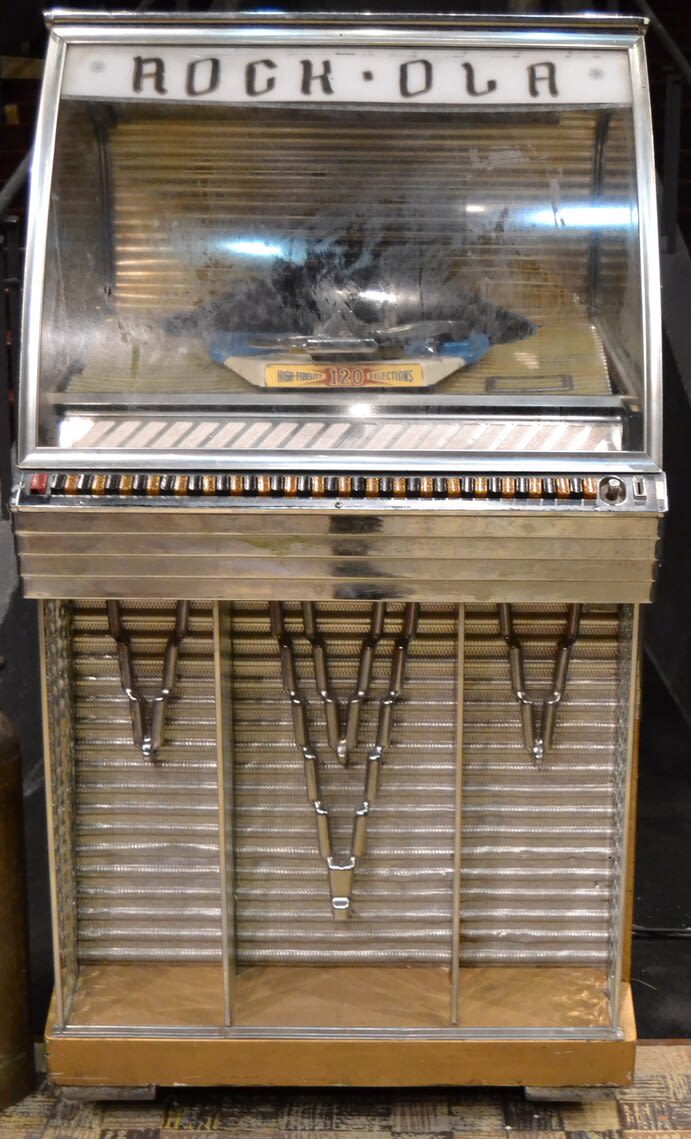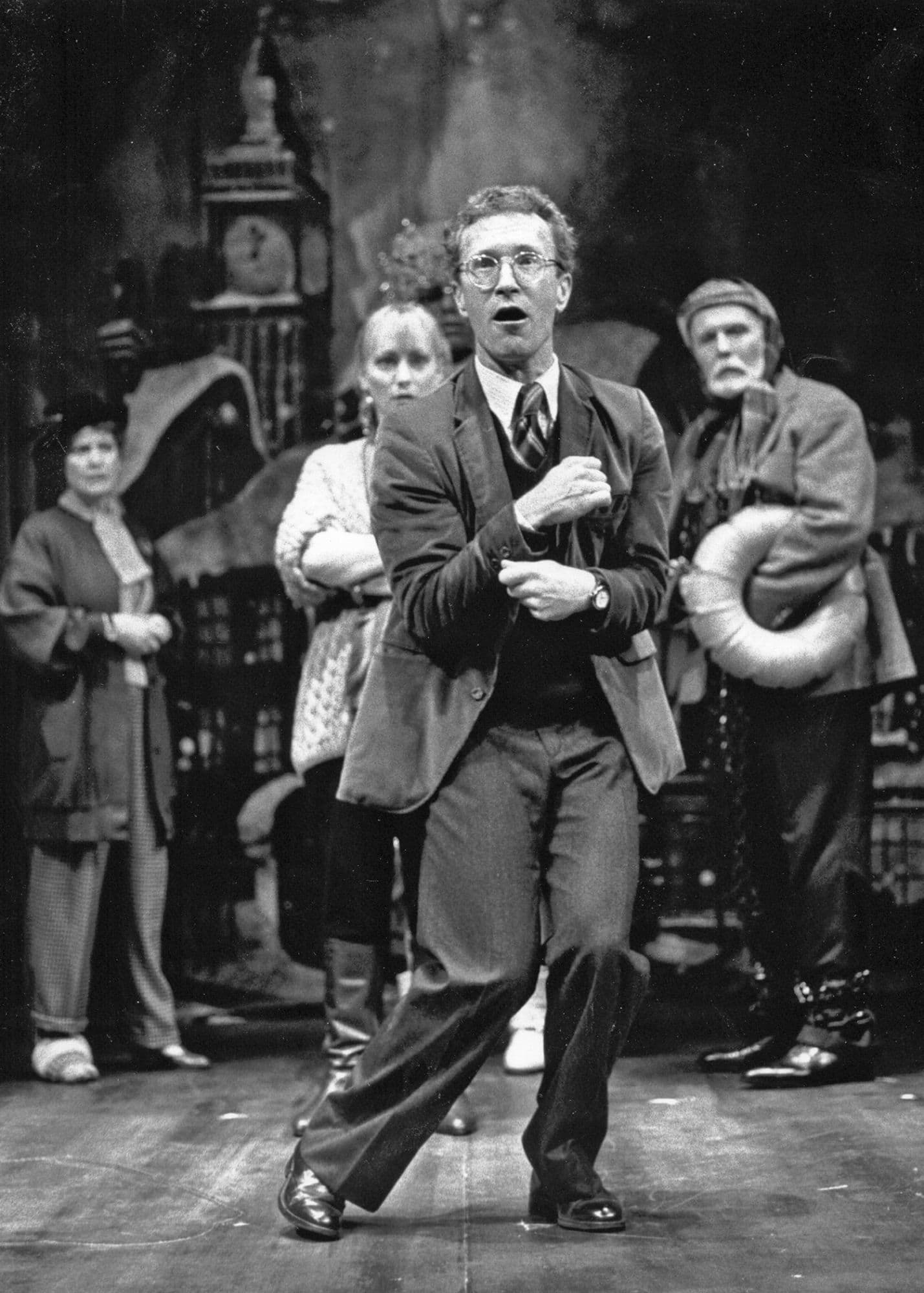Watch
Intermission Edition: Theater Magic Moments
When you see live theater, there are sometimes those “theater magic” moments where you wonder, “How did they do that!?” This week, we’re giving you the inside scoop. We asked members of our production team to share the stories behind the most memorable theater magic moments from our stages.
Stories from Brian Fauska, Technical Director
Stories from Jolene Obertin, Properties Director
Throwing Up On Cue: God of Carnage (2010)

Denis Arndt, Amy Thone, Bhama Roget, and Hans Altwies in God of Carnage (2010). Photo by Chris Bennion.
“The God of Carnage script calls for an actress to throw up onstage on cue. I contacted the set designer Eugene Lee and asked for advice. Eugene has been one of the set designers for Saturday Night Live since it began. I was sure I had seen this being done on that show. Eugene put me in contact with a prop person, who then put me in contact with NBC's special effects department. Then, I sat down with Seattle Rep Technical Director Brian Fauska and we devised a plan.
The whole idea was actually very simple: you need a tank to hold fluid, a way to pressurize the fluid quickly, and hoses. Then came the tricky part: there was a hose traveling down the actor's arm that stopped right above her wrist. She would put both hands together (both palms up, with the hose on the bottom wrist), put her hands up to her mouth, and act like she was vomiting. The director wanted to be confident that this was all worked out before we went into technical/dress rehearsal, so for almost three weeks our assistant stage manager would try different things out in the Seattle Rep parking lot. We played with the pressure and the hand positions. Hand positions played a very important part in getting the spray where we wanted it to be.
The one other thing the actors had to do onstage was hook the hose up. This was so the actor could wander around the stage freely. She then would sit down and the other actors gathered around her acting like they were all concerned because she felt sick and would hook up the hose that started at her waist, went up her back, and then down her arm, held in place by a special costume piece built to hold the hose in place. One dress rehearsal, the hose didn't get connected in time so instead of soup going through the hose, the fluid hit the actor’s backside.
When I talked to the NBC folks, they told us that they would get pea soup from their commissary to use. We don't have a commissary and on television, they never had to worry about the soup being cleaned out of costumes since they only do it a couple of times on camera. We needed to do it 40 times during the run of the show and we couldn't replace costumes that often. We also used a pea soup, but one that had no meat, fat or dairy.
The whole cast was great—they were the ones that had to make sure the audience believed that it was real. I've talked to numerous theaters on how to do this effect, and we actually rented out our set set-up close to a dozen times.”
Making a Severed Head: MAC BETH (2018)

Sophie Kelly-Hedrick, Analiese Emerson Guettinger, and Laakan McHardy, (and the prop head of Charlotte Schweiger) in MAC BETH (2018). Photo by Navid Baraty.
“The director of Mac Beth [Erica Schmidt] liked the work that was done to make the decapitated head of the character Macbeth. [Erica] liked it so much that when she mounted the show at two different off-Broadway theaters, she had the two different Macbeth actors flown out to Seattle so Properties Artisan Angela Zylla could do the head cast, construction, and painting, and Joyce Degenfelder could do the hair.” [Editor’s Note:] The artistry of this severed head had one of the creative minds behind Game of Thrones exclaiming “this is the best head I've ever seen” after being shown a picture of the final product.
Watch how this infamous head was created in our Making the Magic video:
Baaaaaaackstage Shenanigans: Curse of the Starving Class (1987)

Curse of the Starving Class (1987), actors unknown. Photo by Chris Bennion.
“When we did Curse of the Starving Class in the PONCHO years ago, we rented two lambs and their mother to star in the show. We only used one lamb onstage at a time—they had just been weaned, so we wanted Mom there for comfort. We named the lambs Legga and Racka and the mom Stew. We built a pen out in the Seattle Rep parking lot (yes, that meant I and others in the prop shop mucked out the pen and fed them!). Every show, an assistant stage manager would walk one lamb down the hallway for their entrance. Sheep don't really like to cross door thresholds, and they would always stop at a backstage mirror and try to rub noses with their reflection in the mirror. After the run of the show, Legga and Racka went to live on a wool farm, and Stew went back to the farmer in Snohomish that rented them to us. Whenever we've used animals onstage, we talk to owners and veterinarians about best practices to keep the animal healthy, safe, and calm.”
August Wilson’s Personal Jukebox: Two Trains Running (2018)

The 1955 Rock-Ola jukebox, Model 144 from the original Two Trains Running production (at Seattle Rep in 1991). Photo courtesy of Arena Stage.
“When we did Two Trains Running [in 2018], it was the second time the show played on the Bagley Wright stage [in Seattle Rep’s history]. August Wilson lived in Seattle for many years, and Seattle Rep was one of the few theaters that had produced all of his plays. Some of the productions Seattle Rep originated here, and a fair amount came to Seattle Rep from Broadway. August once told me that he saved a prop from each of his shows, therefore I knew that the jukebox from the original Two Trains Running production [1990/91 season] had gone to his Seattle home. We contacted his widow, Constanza Romero and she kindly let us borrow the jukebox again.” Read more about the long history of this jukebox in The Washington Post.
What’s a Laptop?: Inspecting Carol (1991)

R. Hamilton Wright and the cast of Inspecting Carol (1991). Photo by Chris Bennion.
“When we produced the original production of Inspecting Carol, we ended up being able to borrow a laptop computer from a family member of our then-Technical Director. In 1991, nobody at that point had laptops—we didn't even have many (if any) computers in the whole building. We were all in awe and couldn't imagine regular people owning laptops.”





